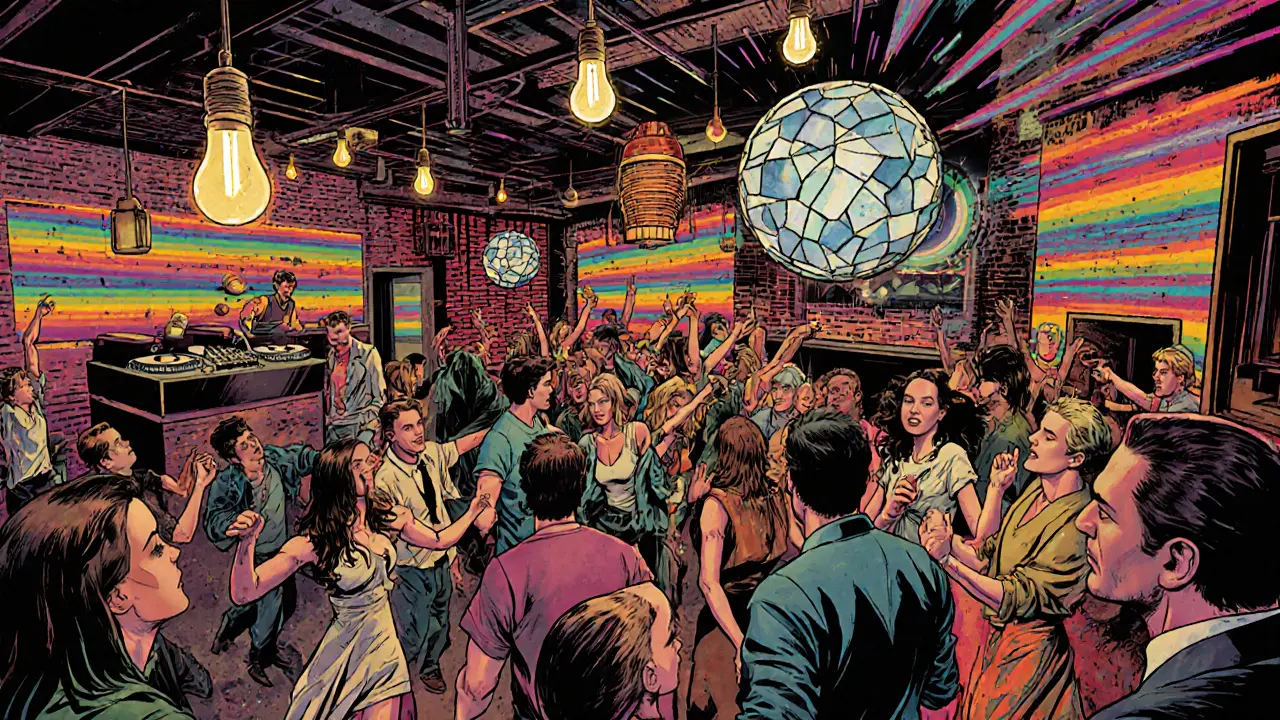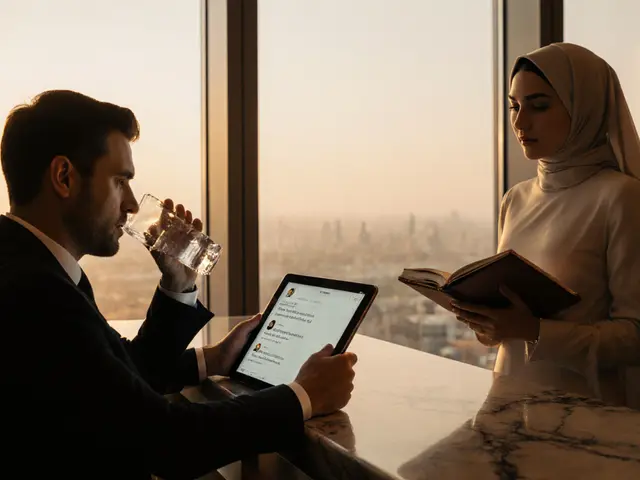
Forget the fashion shows - Milan comes alive after dark
Most visitors think of Milan as a place for designer boutiques and glossy runways. But if you want to see the real pulse of the city, you need to be out after sunset. By 10 p.m., the streets of Brera and Navigli turn into open-air parties. The air smells like espresso, citrus, and gin. Music spills from hidden courtyards. Locals aren’t just drinking - they’re socializing, laughing, and making plans that last until sunrise.
Start with the aperitivo ritual - it’s not just a drink
The Italian aperitivo isn’t a happy hour. It’s a tradition. Between 6 p.m. and 9 p.m., bars across Milan offer a drink - usually a spritz, negroni, or prosecco - and a buffet of snacks that rival a full dinner. You pay around €10-€15, and you get cured meats, stuffed olives, arancini, mini paninis, and sometimes even pasta. The key? Show up early. By 8 p.m., popular spots like Bar Basso in the Porta Venezia district are packed. This is where the Americano was invented in 1925. You’ll find students, artists, and bankers all standing shoulder-to-shoulder, clinking glasses. Skip the tourist traps near the Duomo. Head to Circolo dei Lettori in Brera or Bar del Fico in Navigli for the real deal.
Where to drink when the sun goes down
After aperitivo, the city shifts gears. If you want cocktails with a view, go to Terrazza Aperol on the 16th floor of the Pirelli Tower. The skyline of Milan stretches out below you, lit up like a sci-fi movie. It’s quiet, elegant, and perfect for a slow evening. For something grittier, head to La Scala Club in the Zona Tortona area. It’s a former theater turned underground bar, with jazz on weekdays and vinyl sets on weekends. The crowd here is local - no tourists, no bouncers, just people who know good music.
Don’t miss The Loft in the Porta Romana neighborhood. It’s a speakeasy-style bar hidden behind a fridge door. You need to know the password - ask for it when you arrive. The cocktails are crafted with house-made syrups and Italian herbs. Try the Amaretti Sour, made with amaretto liqueur and lavender. It’s the kind of place you’ll remember for years.

The clubs: Where the real party starts
Most Milanese don’t dance until after midnight. The city’s best clubs don’t even open until 1 a.m. If you’re looking for electronic music, Bikini in the Navigli district is the spot. It’s not flashy. No velvet ropes. Just a converted warehouse with a massive sound system, a crowd of 800 people, and DJs who play deep house and techno until 6 a.m. The entrance fee is €15, and you get a free drink at the door. The vibe? Chill, cool, and totally unpretentious.
For something more high-energy, Lavanderia a Vapore in the Brera area is a favorite among fashion insiders and music producers. The decor is industrial - exposed brick, metal beams, hanging lights. The music is eclectic: disco, funk, house, and even rare Italo-disco tracks from the 80s. The crowd is diverse - Italians, expats, artists, models. You won’t find a dress code here. Just come as you are.
If you’re into live bands or indie rock, Birreria Moratti in the Porta Ticinese area is your best bet. It’s a beer hall with a stage. Local bands play every Thursday and Saturday. The beer is local, the food is cheap, and the energy is contagious. You’ll leave with a sore throat from singing along.
Neighborhood guide: Where to go and where to avoid
- Brera: Artistic, intimate, perfect for cocktails and late-night chats. Best for couples and small groups.
- Navigli: Canals lined with bars, street performers, and open-air dancing. The most touristy but still worth it. Go on a Friday or Saturday night.
- Porta Venezia: Trendy, multicultural, home to the best aperitivo spots. Great for people-watching.
- Zona Tortona: Design district by day, underground club hub by night. Less crowded, more authentic.
- Duomo area: Avoid after 10 p.m. It’s full of overpriced bars targeting tourists. You’ll pay €20 for a soda.
What to wear - and what not to
Milanese nightlife has a dress code - but it’s not about labels. It’s about attitude. You don’t need Gucci. You do need to look put together. Men: dark jeans, clean sneakers or loafers, a button-down or fitted tee. Women: a simple dress, tailored pants, or a nice top with heels. No flip-flops, no hoodies, no baseball caps. Locals notice. And they won’t let you in if you look like you just rolled out of bed.
Pro tip: If you’re going to a club, bring a small bag. Big backpacks and bulky purses are often turned away. Keep your phone, ID, and cash in a slim crossbody.

How to get around safely
Milan’s metro runs until 1:30 a.m. on weekdays and 2:30 a.m. on weekends. After that, you’ll need a taxi or rideshare. Uber is available, but local apps like Free Now (formerly MyTaxi) are cheaper and more reliable. Avoid walking alone after 2 a.m., especially near the train station or in poorly lit alleys. Stick to main streets like Corso Buenos Aires or Via Torino.
If you’re staying in the city center, most clubs and bars are within a 15-minute walk. Many locals even bike at night - Milan has over 200 km of bike lanes, and rental bikes are available 24/7 through the BikeMi system.
When to go - timing matters
Don’t show up at 9 p.m. expecting to dance. The city doesn’t wake up until midnight. Aperitivo starts at 6 p.m., dinner is at 8:30 p.m., drinks begin at 10 p.m., and clubs hit their stride at 1 a.m. If you’re leaving at 2 a.m., you’re missing half the night. The best time to arrive at a club? Between 1:30 and 2:30 a.m. That’s when the real crowd shows up.
Weekends are packed. If you want space to move, go on a Thursday or Friday. Sunday nights are surprisingly lively too - especially in Navigli, where locals unwind with friends before the workweek starts.
Final tip: Talk to the bartenders
They know everything. Where the hidden parties are. Who’s playing next week. Where the best pizza is at 4 a.m. Ask them for a recommendation. Don’t just scroll through Google Maps. Milan’s nightlife isn’t listed online. It’s passed down by word of mouth.
Is Milan nightlife safe for tourists?
Yes, Milan is one of the safest major cities in Europe for nightlife. Violent crime is rare. The biggest risks are pickpockets in crowded bars and overpriced drinks in tourist zones. Stick to well-lit areas, avoid flashing cash, and use licensed taxis. Locals are friendly and will help if you look lost.
Do I need to book tickets for clubs in advance?
For most clubs, no. Walk-ins are welcome. But if you’re going to a special event - like a DJ residency or a themed night - check the club’s Instagram or website. Events like the monthly Soundwave party at Bikini or Disco Navigli often sell out. Buy tickets online to skip the line.
What’s the legal drinking age in Milan?
The legal age to buy alcohol in Italy is 18. Clubs and bars check ID, especially for younger-looking guests. Bring your passport or EU ID card. No exceptions.
Can I pay with credit cards everywhere?
Most bars and clubs accept cards, but many small aperitivo spots and underground venues are cash-only. Carry at least €20-€30 in cash. ATMs are everywhere, but avoid those in train stations - they charge high fees.
Are there any gay-friendly nightlife spots in Milan?
Yes. Milan has one of Europe’s most vibrant LGBTQ+ scenes. The Loft and La Scala Club are welcoming to all. For dedicated gay bars, head to Bar Lido in the Porta Venezia area - it’s been open since 1985 and hosts drag nights and queer parties weekly.


